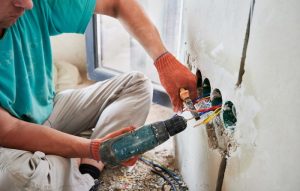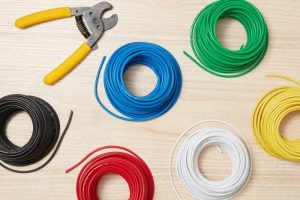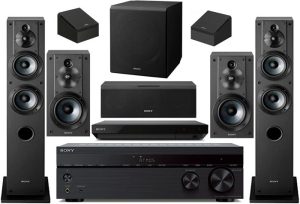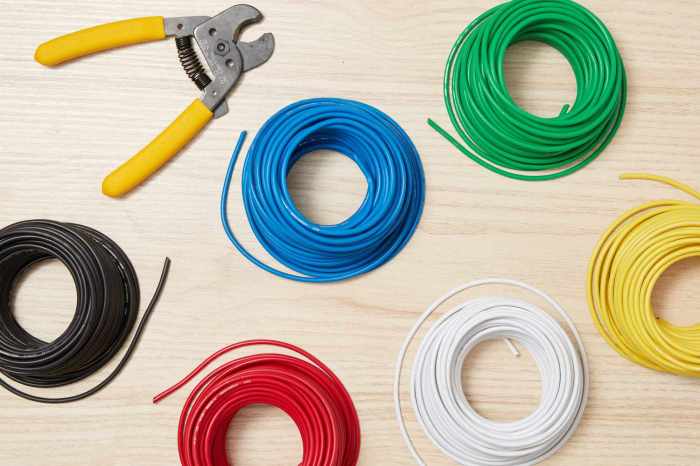
Selecting Other Essential Components
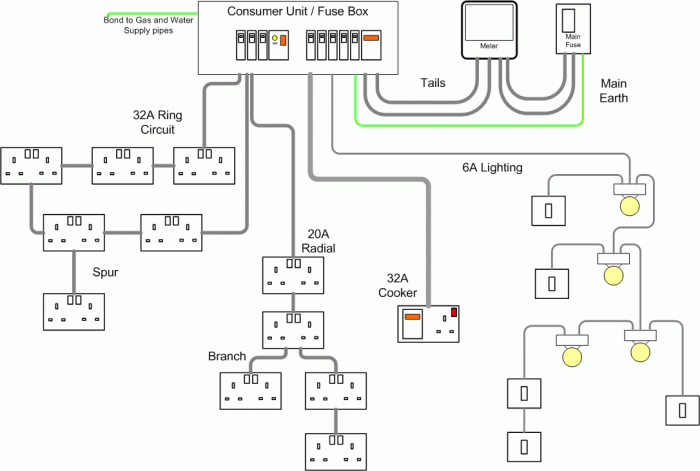
Choosing the right electrical components extends beyond just wires and switches; selecting appropriate electrical boxes and connectors is crucial for a safe and functional electrical system. These seemingly minor components play a significant role in ensuring the longevity and safety of your home’s wiring. Proper selection and installation are essential for preventing fire hazards and ensuring code compliance.Electrical boxes provide a secure and organized housing for wiring connections, protecting them from damage and ensuring a neat installation.
They also serve as mounting points for switches, outlets, and other devices. Choosing the right box depends on several factors, primarily the number and type of wires entering the box, the type of device being installed, and the location of the box (e.g., in-wall, surface-mounted). Box specifications are usually indicated by their volume (cubic inches) and the number of cable clamps.
Always select a box with sufficient volume to accommodate all wires and devices without overcrowding, adhering to the guidelines specified in the National Electrical Code (NEC).
Electrical Box Selection
The selection of electrical boxes requires careful consideration of several factors. The box’s volume must be sufficient to accommodate all wires and devices installed within it, preventing overcrowding which can lead to overheating and fire hazards. The NEC provides specific guidelines on the minimum volume required based on the number and size of conductors and the type of device being installed.
The type of box, such as a single-gang, double-gang, or multi-gang box, will depend on the number of devices to be installed. For example, a standard single-gang box is suitable for a single switch or outlet, while a double-gang box is needed for two devices. The box must also be appropriate for the installation location, such as in-wall or surface-mounted, and the material must be suitable for the environment (e.g., non-metallic boxes for damp locations).
Finally, the box should have the correct number of cable clamps to securely hold the cables in place.
Connector Types and Usage
Various connectors are used to join wires within electrical boxes, ensuring a secure and reliable connection. Wire nuts are commonly used for connecting multiple wires of the same size and material. They are available in different sizes to accommodate different wire gauges. For instance, a smaller wire nut is used for connecting 14-gauge wires, while a larger one is needed for 12-gauge wires.
Always ensure the wire nut is properly tightened to create a secure connection. For connecting wires of different sizes or materials, special connectors such as crimp connectors or split-bolt connectors may be necessary. Crimp connectors are used by crimping the connector onto the wire ends using a crimping tool. Split-bolt connectors are used by inserting the wire ends into the connector and tightening the bolt.
Connecting Wires Within an Electrical Box
Before connecting wires, it’s crucial to ensure the power is turned off at the breaker box. Each wire should be stripped to expose the necessary length of bare copper, usually about ½ inch. Then, the wires are twisted together tightly, ensuring all strands are securely held. Next, the appropriate connector, whether a wire nut or another type, is placed over the twisted wires.
The connector is then tightened until it’s secure, ensuring that the wires are firmly held together and there is no slack. The wires should be neatly arranged within the box, avoiding overcrowding. Once all connections are complete, the wires should be secured to the box using cable clamps. The device, such as a switch or outlet, is then mounted to the box, and the cover plate is installed.
Finally, always visually inspect the connections to ensure they are secure and meet all safety standards.
Safety Precautions and Regulations

Working with electricity requires a high degree of caution. Improper wiring can lead to serious consequences, including electrical fires, shocks, and even fatalities. Understanding and adhering to safety regulations is paramount for protecting yourself and your home.Adherence to local electrical codes and regulations is not merely a suggestion; it’s a legal requirement and a critical safety measure. These codes are developed by experts to minimize risks associated with electrical installations.
Ignoring these regulations puts your property and the lives of those within it at considerable risk. Local authorities regularly inspect electrical work to ensure compliance, and non-compliance can result in fines or even the need for costly rework. Familiarizing yourself with your area’s specific electrical code is a crucial first step in any home wiring project.
Potential Dangers of Improper Wiring
Improper wiring can manifest in various ways, each carrying its own set of dangers. Faulty connections can overheat, leading to melting insulation and potentially igniting flammable materials nearby. Damaged wiring can expose live conductors, creating a risk of electric shock, especially dangerous in areas with moisture. Incorrectly sized wires can overload circuits, causing overheating and potential fires.
These dangers highlight the importance of careful planning and execution when working with electrical systems. If you lack the necessary expertise, it’s essential to seek professional assistance.
Safety Measures When Working with Electricity
Before undertaking any electrical work, several crucial safety measures should be followed. These measures significantly reduce the risks associated with handling electricity.
- Always turn off the power: Before working on any electrical component, always switch off the power at the breaker box. This prevents accidental shocks and ensures a safe working environment.
- Use appropriate personal protective equipment (PPE): This includes insulated tools, safety glasses, and rubber gloves to protect against electric shock and potential injuries from other hazards.
- Never work alone: Always have another person present to assist in case of an emergency. A second pair of eyes can also help identify potential hazards.
- Inspect wiring carefully: Before starting any work, thoroughly inspect all wiring for signs of damage, such as fraying, exposed conductors, or overheating.
- Use the right tools: Employ tools specifically designed for electrical work. Improper tools can damage wiring and create hazards.
- Understand circuit breakers and GFCIs: Familiarize yourself with how your circuit breakers and Ground Fault Circuit Interrupters (GFCIs) function. Knowing how to use these safety devices is crucial.
- Consult a professional electrician when needed: If you are unsure about any aspect of electrical work, do not hesitate to contact a qualified electrician. Their expertise can prevent accidents and ensure a safe installation.
Troubleshooting Common Wiring Problems
Home electrical systems, while generally reliable, can experience issues. Understanding common problems and their solutions empowers homeowners to address minor faults safely and efficiently, or to know when professional help is needed. This section Artikels troubleshooting steps for typical wiring problems.
Tripped Circuit Breakers: Causes and Diagnosis
A tripped circuit breaker indicates an overload or short circuit on that specific circuit. Overloads occur when too many appliances draw more current than the breaker is rated for. Short circuits happen when a live wire touches a neutral wire or ground, causing a surge of current. To diagnose, first, turn off all appliances on the affected circuit.
Then, reset the breaker. If it trips immediately, a short circuit is likely. If it stays on, gradually turn appliances back on one by one to identify the culprit. A persistent tripping issue may indicate a faulty appliance or a more serious wiring problem requiring professional attention.
Troubleshooting Faulty Outlets or Switches
A non-functional outlet or switch might be due to a blown fuse within the outlet itself (less common in modern installations), a loose wire connection, or a faulty switch mechanism. Begin by checking the breaker controlling that circuit. If it’s tripped, reset it and test the outlet/switch. If the problem persists, turn off the power at the breaker.
Carefully remove the outlet or switch cover plate and inspect the wiring connections. Loose or corroded wires should be tightened and cleaned. If the problem remains after reconnecting, the outlet or switch itself may be defective and needs replacement.
Symptoms of Various Electrical Problems and Solutions
Several symptoms indicate underlying electrical issues. Flickering lights might suggest a loose connection, overloaded circuit, or a problem with the wiring in the walls. Dim lights can point to a loose neutral connection or insufficient amperage for the load. Warm or hot outlets or switches indicate excessive current flow, potentially due to a short circuit or overloaded circuit.
Burning smells are a serious warning sign of overheating wiring, requiring immediate power shut-off and professional inspection. Sparks from outlets or switches are extremely dangerous and signal an immediate need for professional electrical assistance to prevent fire hazards. A buzzing sound from an outlet or switch usually points to a loose connection or a faulty component. In all cases of unusual electrical behavior, prioritize safety by switching off the power at the breaker before attempting any investigation or repair.

